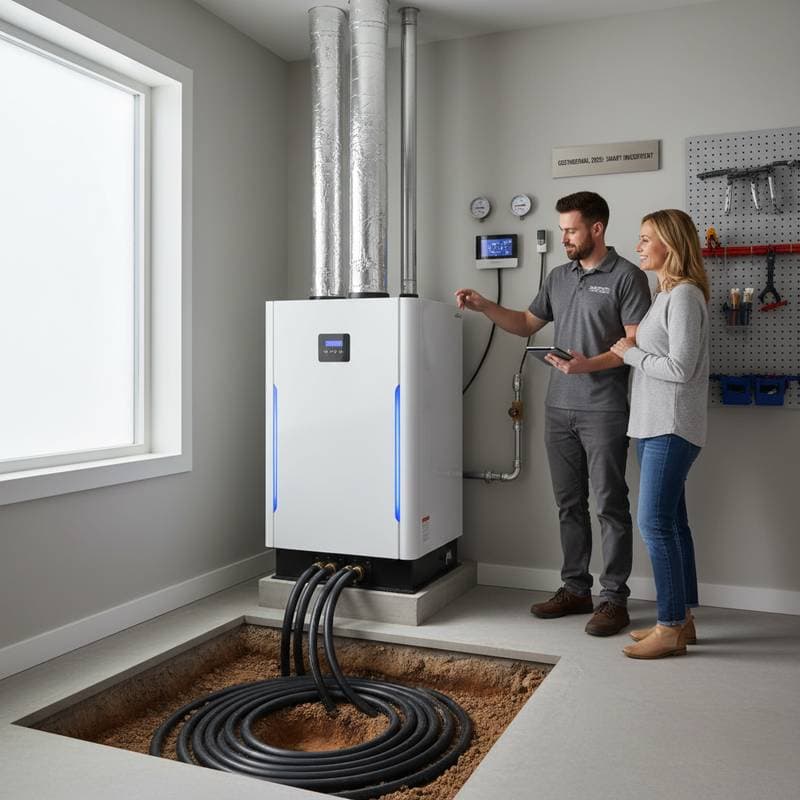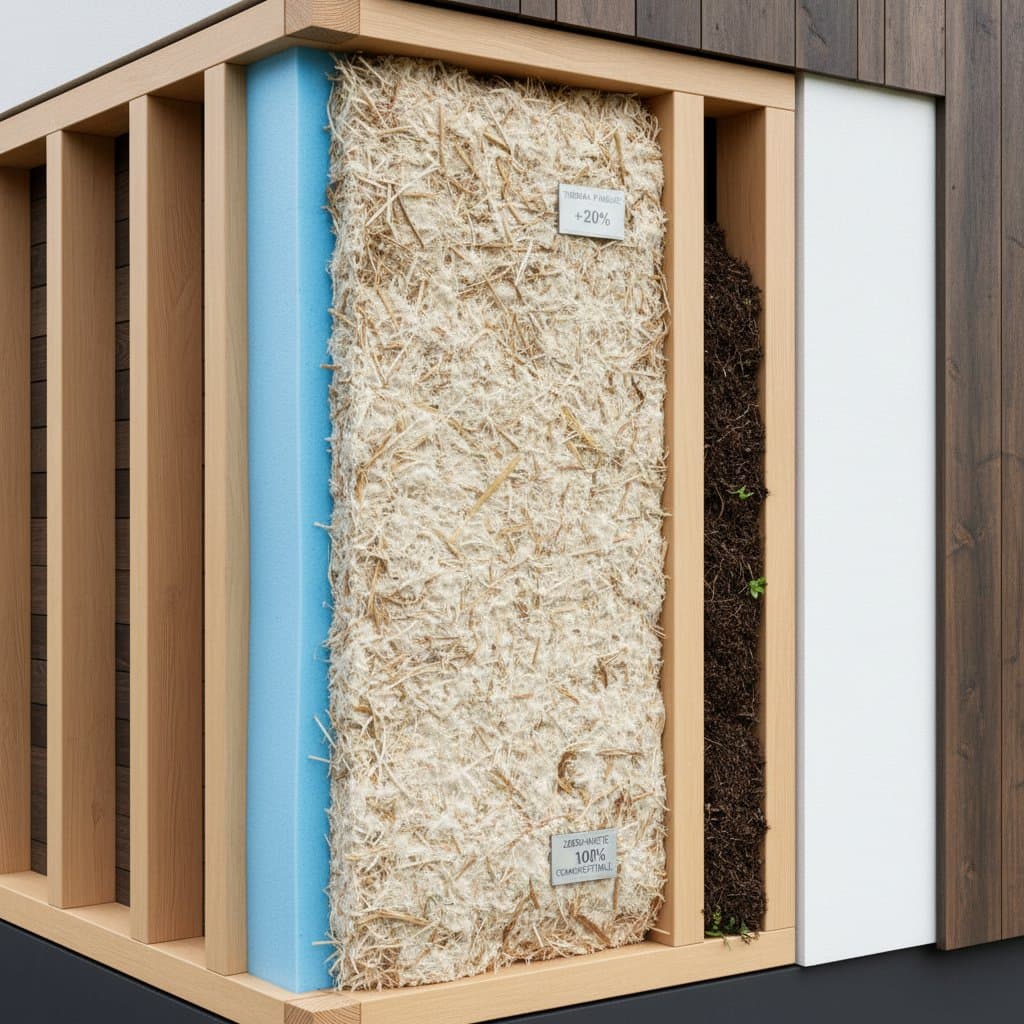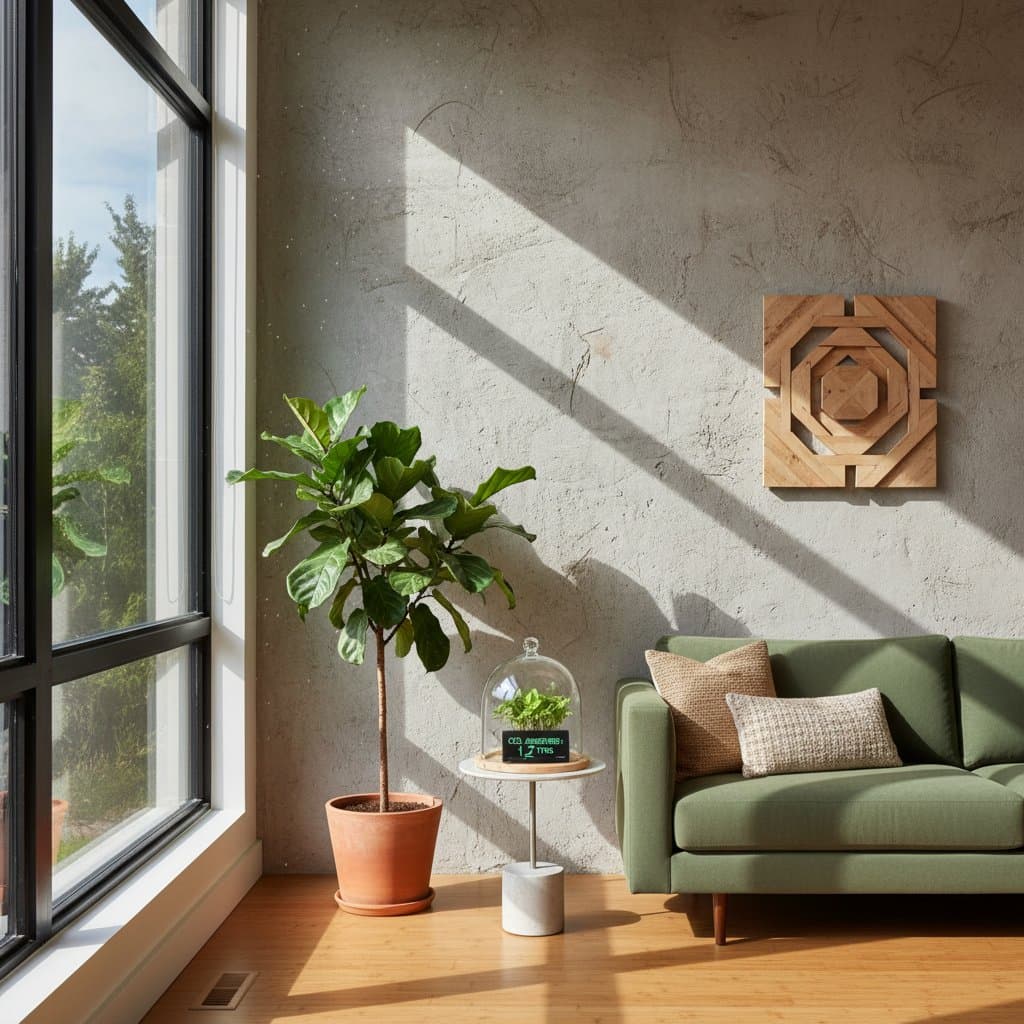Mycelium Insulation: Revolutionizing Eco-Home Upgrades
Key Points
- Mycelium insulation provides a biodegradable and non-toxic alternative to traditional fiberglass or foam products.
- It offers strong thermal performance, fire resistance, and improvements to indoor air quality.
- Initial costs exceed those of conventional insulation, but efficiency gains and long-term durability improve the return on investment.
- Homeowners can install it during remodels, new constructions, or projects focused on sustainability and healthy living spaces.
- Understanding installation methods, maintenance needs, and local climate effects is crucial for making informed choices.
Why Mycelium Insulation Matters
Insulation does more than provide comfort. It controls ongoing energy costs, increases property values, and reduces environmental harm. Traditional materials like fiberglass and spray foam offer low upfront prices, but they often contain toxic binders, come from petrochemical sources, and create disposal problems at the end of their life.
Mycelium insulation changes this equation:
- Environmental benefits: Fully biodegradable and grown from agricultural waste products.
- Health benefits: No off-gassing or microfibers to harm indoor air quality.
- Durability aspects: Resists mold, insects, and fire without chemical additives.
- Performance measures: Matches the thermal efficiency of mid-range fiberglass.
Homeowners who want to protect their properties from future risks view this material as a practical and symbolic choice. It supports larger aims of resilience and environmental care.
Cost and Return on Investment
The main barrier to adoption is price. Limited production scales lead to costs higher than those for fiberglass or cellulose. Installed prices now range from $12 to $15 per square foot, compared to $4 to $6 for fiberglass and $6 to $8 for cellulose.
A full financial review shows other advantages:
- Energy savings: Similar reductions in heating and cooling costs as standard mid-tier insulation, which can cut annual energy bills by 10 to 20 percent.
- Health savings: Less exposure to allergens, no off-gassing, and lower risks of respiratory problems lead to fewer medical expenses.
- Longer lifespan: Resistance to pests and mold means less frequent replacements or repairs.
- Higher resale value: Eco-friendly upgrades attract buyers willing to pay more for sustainable homes.
Over 20 to 30 years, the return on investment often equals or exceeds that of traditional options, particularly for those who prioritize sustainability and health over short-term savings.
Comparing Mycelium to Other Options
People upgrading insulation need clear comparisons of choices.
Fiberglass
- Lower starting costs.
- Wide availability.
- Health risks from airborne fibers.
- Non-biodegradable, adding to landfill waste.
Spray Foam
- Excellent air sealing.
- High R-value per inch.
- Higher costs and petrochemical base.
- Potential for moisture trapping if ventilation is poor.
Cellulose
- Uses recycled content for some environmental gains.
- Affordable pricing.
- Settling over time that reduces effectiveness.
Mycelium
- Made from renewable sources, fully biodegradable, and toxin-free.
- Natural fire resistance.
- Higher current costs and limited suppliers.
- Good sound absorption and moisture control.
These differences show how mycelium balances performance with environmental responsibility.
Market Trends and Future Growth
Demand for sustainable building materials grows steadily. As production scales up, mycelium insulation costs will likely fall, making it a stronger rival to common products. Green building certifications already recognize its role in meeting environmental standards, increasing its appeal for homes and businesses.
Experts predict advances such as combining it with other bio-materials to boost performance while keeping sustainability intact. Early adopters gain immediate benefits and enhance their properties' value in real estate markets that favor green features. Forecasts suggest wider availability in the next five years, fueled by regulations and buyer preferences.
Steps to Install Mycelium Insulation
Homeowners interested in mycelium insulation can follow these steps:
- Evaluate goals: Determine if the focus is health, environmental impact, or long-term financial gains.
- Consult professionals: Work with contractors or architects experienced in green materials to check local availability.
- Start small: Apply it in one room or an addition before committing to a full home project.
- Explore incentives: Look into green loans, tax credits, or rebates from utilities to cover upfront costs.
- Document upgrades: Keep records of eco-improvements, as buyers value proof of sustainable choices.
This step-by-step plan turns mycelium insulation into a practical home improvement.
Benefits in Daily Living
After installation, the advantages go beyond lower utility bills. Residents enjoy a quiet, healthy space that aligns with earth-friendly values. Knowing that building elements come from natural sources and break down safely builds lasting confidence.
Mycelium insulation goes beyond standard materials. It reflects shifting views on home design, personal health, and global care, encouraging homeowners to join positive change.










